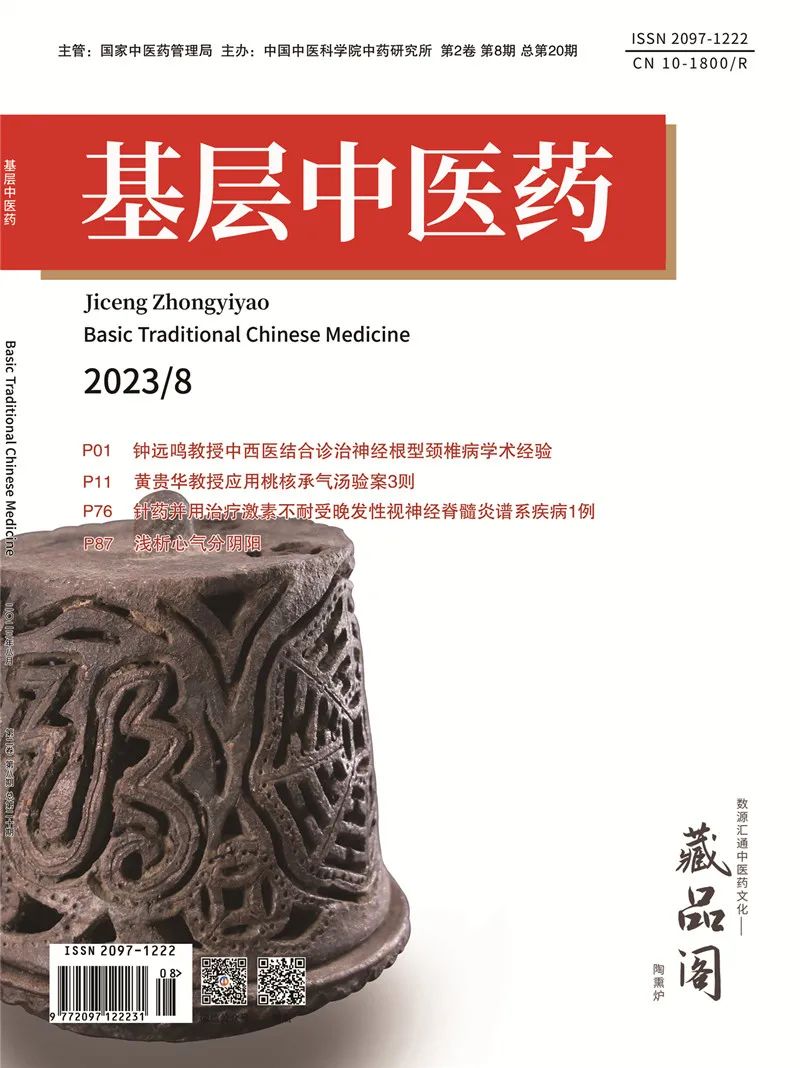

The Remarkable Fire Needle Therapy
Hebei Changli County / He Guixiang
A few years ago, a relative from a mountainous area came to the clinic complaining of persistent headaches for two months, fearing he had a “brain tumor” and requesting an examination. After a detailed inquiry into his medical history, I learned that this relative had previously suffered from “shingles” (zoster), and although the blisters had healed, he continued to experience headaches without relief. Upon examining the area of pain and considering his medical history, I determined that his headache was due to postherpetic neuralgia.
Shingles, commonly referred to as “snake skin sores” (she pan chao) or “fire belt sores” (huo dai chao), is a common viral skin disease caused by the varicella-zoster virus. The main clinical manifestations are rashes and neuralgia. Postherpetic neuralgia occurs when pain persists for more than one month after the shingles rash has resolved, often accompanied by pigmentation at the site of the original rash. This condition is considered a difficult problem in dermatology. Patients often exhibit abnormal emotions, accompanied by a sensation of tightness, and experience long-term persistent pain, severely affecting their quality of life and mental health. Postherpetic neuralgia typically presents as sharp, burning, or electric shock-like pain.
Western medicine attributes the cause of postherpetic neuralgia to the varicella-zoster virus invading the sensory nerve endings in the skin and affecting the nerve ganglia. After the rash disappears, the nerve ganglia remain damaged, leading to the development of postherpetic neuralgia. Traditional Chinese Medicine (TCM) has long recorded this condition, attributing its cause to insufficient vital energy (zheng qi) and an inability to circulate blood, resulting in blood stagnation, excess pathogenic factors, and a weakened defense against pathogens, leading to blocked meridians and pain.
In terms of treatment, there are many integrative approaches in both Western and Chinese medicine. Western medicine primarily employs methods such as nerve nutrition, antiviral medications, nerve blocks, and surgical removal of affected nerves. Some patients with chronic pain may require long-term oral analgesics or antidepressants. TCM offers various treatment methods. The “Clinical Guidelines for Medical Cases” states: “Chronic pain must enter the collaterals; within the collaterals, qi and blood, deficiency and excess, cold and heat, any lingering pathogenic factor can cause pain.” Chronic illness enters the collaterals, and when the meridians are blocked, pain occurs; thus, unblocking the collaterals to relieve pain is the fundamental treatment principle for this condition. Based on our years of clinical observation, fire needle therapy has proven to be an effective treatment method.
The term “fire needle” was first mentioned in the Jin Dynasty in Chen Yanzhi’s “Xiaopin Fang”: “To treat abscesses and boils, when the swelling is red and hot, if the pus is shallow, fire needles can be used; to treat the initial stages of various abscesses and breast abscesses, fire needles are used, applying ointment as in the treatment of abscesses.” This indicates that fire needles can treat abscesses. The development of fire needle therapy began in the era of the “Huangdi Neijing” (Yellow Emperor’s Inner Canon), where it was referred to as “burning needles” (fan zhen) or “quenching needles” (shuan ci), primarily used for treating cold syndromes, bi syndromes, and musculoskeletal diseases. Zhang Zhongjing’s “Shanghan Lun” referred to it as “burning needles” for treating exterior symptoms of cold damage. In the Tang Dynasty, Sun Simiao’s “Beiji Qianjin Yaofang” referred to it as “white needles” for treating sores, abscesses, scrofula, and bleeding disorders. In the Song Dynasty, Wang Zhizhong recorded cases of fire needle therapy for abdominal pain, asthma, and low back pain in his “Zhenjiu Zisheng Jing”, also applying it in otolaryngology. By the Ming and Qing Dynasties, texts such as “Zhenjiu Juying” and “Zhenjiu Dacheng” detailed the instruments and techniques of fire needle therapy, marking its development as largely mature, with significant advancements in both instruments and treatment scope today.
Fire needles are made from special materials, typically tungsten-manganese alloy or iron-chromium alloy. During treatment, the needle is heated and then inserted into specific acupoints (xue) or areas of the body. It has the effects of tonifying the yang, warming the meridians, expelling pathogens through heat, promoting tissue regeneration, and healing sores.
The indications for fire needle therapy are quite broad. In internal medicine, it can treat wind-cold cough, wind-cold headache, pain in the brow ridge, gastric ptosis, epigastric pain, allergic asthma, facial paralysis, facial muscle spasms, diarrhea with edema, nocturnal enuresis in children, rib and flank pain, and enteritis. In surgery, it can address mastitis, tenosynovial cysts, tenosynovitis, fibromas, phlebitis, osteoarthritis of the knee, cervical spondylosis, and lumbar spondylosis. In gynecology, it can treat infertility, acute and chronic adnexitis, uterine fibroids, dysmenorrhea, and vulvar leukoplakia. In dermatology, it can be used for neurodermatitis, shingles, eczema, acne, psoriasis, urticaria, vitiligo, moles, and warts. In otolaryngology, it can treat eyelid inflammation, nasal polyps, and throat pain.
In recent years, fire needle therapy has also been used to treat tumors. The book “Golden Insights into Traditional Chinese Medicine for Tumor External Treatment” records a case of fire needle therapy for a ruptured breast tumor: a 70-year-old woman with a ruptured breast tumor. Upon examination, the ulcer measured 5 cm in diameter, involving the rib, with unbearable pain, and she requested TCM treatment. A student, Zhang Qiaoli, used fire needles to surround the tumor, treating twice a week, and applied powdered Chinese medicine externally to the ulcer three times a day. After one week, the pain alleviated, and new granulation tissue appeared at the ulcer site. Combined with decoctions and acupuncture, after nine months of treatment, the tumor disappeared, and the ulcer healed.
Recent research has made significant progress in understanding the mechanisms of fire needle therapy, with several theories proposed:
1. Damage Theory: During fire needle treatment, the heated needle penetrates the adhered scar tissue, causing thermal injury and necrosis to the pathological tissue surrounding the needle. This necrotic tissue acts as a stimulus, prompting a response from surrounding healthy tissue, leading to macrophage infiltration to absorb the damaged material. After absorption, the deficient cells and tissues are repaired through regeneration from surrounding healthy cells, restoring the original tissue structure.
2. Activation Theory: The thicker needle of the fire needle can cause muscle fiber rupture, triggering an acute local tissue response, thereby activating the body’s immune response to achieve therapeutic effects. Experimental results indicate that after acupuncture, the total white blood cell count, neutrophil count, complement levels, blood glutathione, and serum cortisol all change, contributing to anti-inflammatory effects.
3. Drainage Theory: Modern studies show that fire needles, when inserted at high temperatures, can destroy inflammatory lesions, facilitating the drainage of inflammatory exudates. For instance, in cases of recurrent joint effusion, pain may fluctuate, making it difficult to treat. In such cases, draining the effusion can effectively promote the absorption of inflammation, clearing the meridians through thermal cautery, allowing visible pathogenic factors like blood stasis to be expelled directly from the body through the needle holes, achieving the goal of expelling pathogens.
4. Carbonization Theory: Fire needles, when applied at high temperatures, can cause subtle areas of pathological scar tissue to carbonize, allowing for the release of adhered tissues and improving local blood circulation. This effect is related to the prolonged biological effects of the high heat from the fire needle on the stimulated acupoints.
5. Promotion Theory: Direct stimulation of lesions and reflex points with fire needles can rapidly eliminate or improve local tissue edema, congestion, adhesion, calcification, and ischemic contractures, thereby accelerating circulation, enhancing metabolism, and facilitating the repair of damaged tissues and nerves. Fire needles can tonify the yang, warm the meridians, expel pathogens, regulate qi, and invigorate blood circulation, promoting blood flow in the pelvic region and improving tissue nutrition, thereby aiding in the absorption and resolution of inflammation.
6. Absorption Theory: Fire needle punctures can reduce hardness and swelling, promoting the absorption of chronic inflammation. They can destroy pathological tissues, stimulating the body to absorb necrotic tissue. Through multiple punctures and a period of rest after each treatment, the body can fully absorb and metabolize the burned tissue, leading to a gradual reduction and eventual disappearance of fibrous structures. Microscopic observations of newly formed tissues after fire needle therapy often show early inflammatory cell infiltration, active neovascularization in connective tissues, and interspersed arrangements of residual muscle tissues and newly formed connective tissues. In later stages, inflammatory responses diminish, and proliferative connective tissues radiate from small blood vessels, maintaining normal muscle fiber arrangements. Externally, scar nodules formed from damage appear softened, reduced, or disappear, indicating a benign process of absorption and regeneration.
7. Bactericidal Theory: For example, when fire needles are heated to a bright white and inserted into diseased lymph nodes, the Mycobacterium tuberculosis within cannot withstand high temperatures. Whether the therapeutic mechanism is related to this remains to be further studied. Fire needles excel at warming and unblocking the meridians, and puncturing ulcerated surfaces can unblock meridians, disperse nodules, expel necrotic tissue, promote healing, kill bacteria, and relieve pain.
8. Cauterization Theory: Modern medicine posits that small blood vessels and nerve bundles exist deep within the tendons of extensor muscles, with pain points located where these bundles pass through fascia. Cutting this bundle yields significant therapeutic effects, and using fire needles to directly cauterize this bundle is highly effective. However, during fire needle treatment, it is crucial to accurately puncture the pain point in the muscle fascia to ensure effective cauterization of the blood vessel nerve bundle; otherwise, the results may be poor or ineffective. Multiple punctures (1-2 additional needles) have not shown any adverse effects.
9. Synergistic Theory: Directly cauterizing anal fissures and hemorrhoids with fire needles can simultaneously cause thermal injury to pathological tissues, forming scar tissue or necrosis, while also rapidly eliminating or improving local tissue edema, congestion, exudation, adhesion, calcification, and ischemic contractures, thereby accelerating blood circulation and promoting the repair of damaged tissues and nerves. This demonstrates a synergistic effect, showcasing unique and remarkable therapeutic efficacy that cannot be replaced by other treatment methods.
Returning to the relative I treated, I applied fire needle therapy. The area of headache was disinfected with 75% alcohol, and with my right hand holding the needle and my left hand using an alcohol lamp, I heated the needle to a white-hot state and quickly inserted it into the temple to a depth of 2 mm, then punctured the surrounding painful areas, followed by pressing the puncture site with a dry cotton ball. I advised him not to wet the area for 24 hours to prevent infection. After the treatment, the patient’s headache significantly reduced. He was initially hesitant to accept this reality and requested to observe for another night. The next day, he left happily and has not experienced a recurrence since.


National Administration of Traditional Chinese Medicine
China Academy of Chinese Medical Sciences, Institute of Chinese Medicine
Traditional Chinese Medicine Knowledge Health and Wellness Information



Article copyright belongs to Family Traditional Chinese Medicine, unauthorized reproduction or excerpt is prohibited. Image copyright belongs to the original author.
Use the prescribed formulas and medicines under the guidance of a physician.
Author of this article:He Guixiang
Editor of this article:Xiu Long


